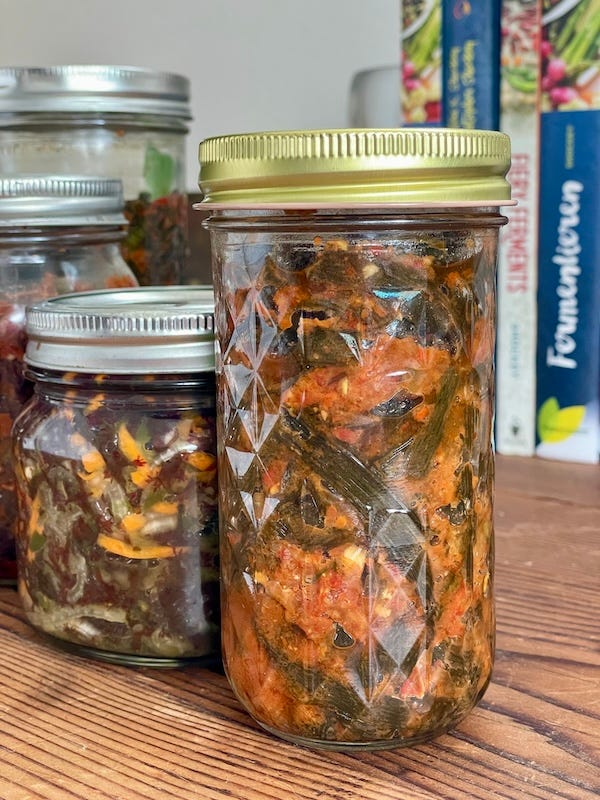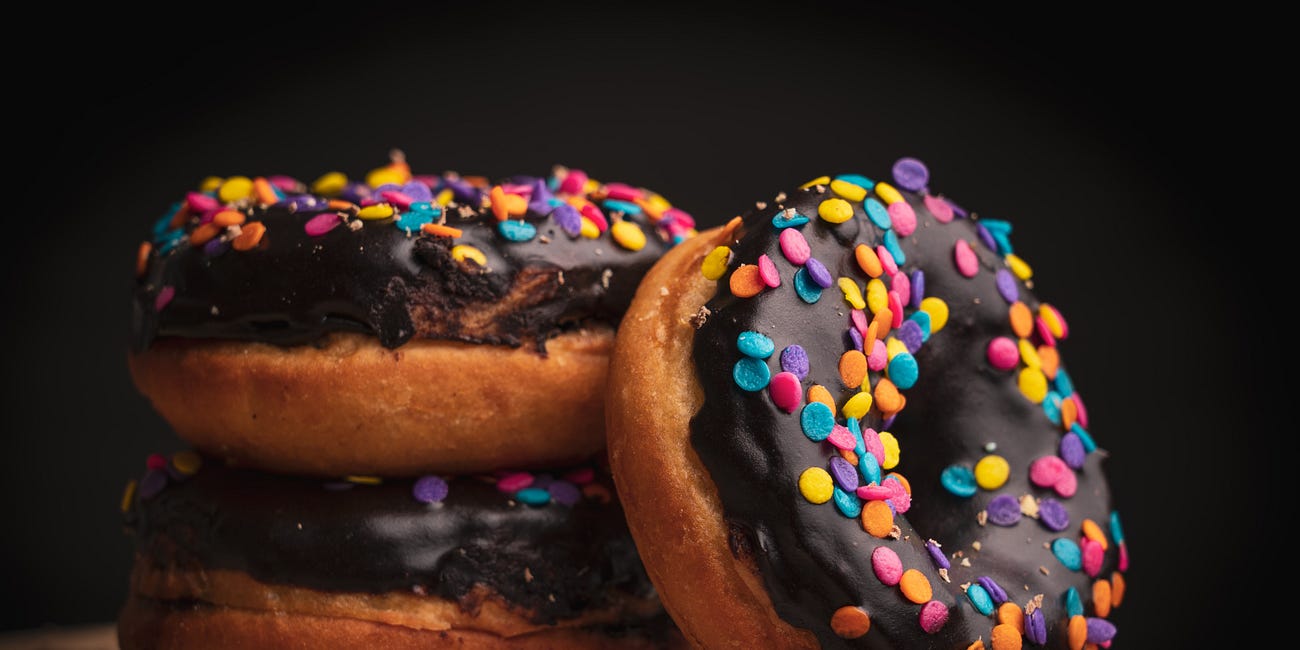Ferment for the children in your life
It is an act of resistance to eat whole foods and even larger to feed whole foods to the next generation--but this post starts with a turkey.
A couple of nights ago I sat on a bench, under a sprawling maple tree, an elder, hanging on to life. There are green leaves, but they are small, stunted, and few. The canopy is more branchy than bower. I was with some friends as we waited for a few other friends to arrive and the concert line to get shorter. A wild turkey hen (Meleagris gallopavo) flew up into the crown, probably a little anxious about the hundreds of people descending on this usually quiet park for a concert. It landed on a branch directly over the folks standing in line. Turkeys, are capable of bursts of ungraceful but powerful flight and, therefore, not quiet when landing. The people in line looked up, laughed, and adjusted their positioning. Like a river bend, the previously straight line had a wide bow—and a good thing too. The turkey began to poop from around two stories up and if you will remember there is no leafy cover, so the poo landed in a few epic splats right where the line had been. The turkey teetered on the branch a while longer. People below moved on and by the time it flew off to another tree, it had been forgotten.
But the line had its memory. For the next 20 minutes, it continued to move in a wide bow before eventually straightening back out. Those of us observing from the bench (because isn’t philosophizing part of the delight of sitting on a park bench?) marveled how nobody had any idea why, or even seemed to notice that the line was not in its normal path they just followed along. We joked about the future of the line and the mythology that would build up about the place one should never stand despite nobody knowing why.
For example, let’s not even go deep into this, when I look at the illustrations in children’s books I feel like this same we-have-just-done-it-this-way persists. Farms have red barns and bucolic Noah’s Ark-like pairs of domesticated animals hanging about. Houses are stuck in another era and don’t look like mobile homes, subdivision homes, tiny homes, apartments, or any of the other places families call home. And grandmothers wear aprons and cook good food. There is a collective mythology around our grandmother’s cooking. For good reason, but…(That is coming.)
Kristen Hawkes, an anthropologist at the University of Utah, researched the Hadza of Tanzania, who are present-day foragers. According to her research, the older Hadza women, who normally live well into their seventh and eighth decades, “provide more food for the group than any other age or sex.” These ladies have not only the ecological knowledge of the region but more verve to gather, dig for, and preserve the foodstuffs. Combined research on many foraging peoples worldwide found that grandmothers consistently contribute more to a family’s calorie intake than any other member of the family: around 500 calories each day.*
I believe it. Not that anyone is counting, but Christopher and I have fed snacks to the hungry little birds we call our grandchildren twice today, and it is not yet noon.
How does this depiction of a grandmother as all things cozy and homecooked persist as the stereotype despite our Ultra-processed food lifestyle? (I don’t have the answer but suspect it lies in marketing.)
Naturally, each of us has our own story. Does yours fit within the apple-pie holding image? Mine didn’t. My grandmothers were both badasses in their own right, each defying the norms of their times and doing what they needed to do to take care of themselves. They both cooked, at least, by the time I knew them. My German Omi taught me to cook and have the patience to make thin perfect pfannenkuchen. My American Grandma didn’t cook much, choosing lox and bagels for most meals. But she made a mean lasagna, the best NY cheesecake, a delicious moist-from-scratch chocolate cake, a good pot roast, and the worst chicken cacciatore ever. That was her repertoire, honed during retirement. As a result, her grandchildren do have memories of her home cooking despite most of her life choosing not to.
To be fair she was an orphan at eleven and a young mother during the post-war boom when convenience in cans and boxes swept through America’s kitchens. This time was yet another defining moment in the systematic effort by corporations to take over all food preparations that had begun years earlier but was now taking hold. Food independence was replaced by food reliance. Homegrown and homemade whole foods were first attacked at the end of the nineteenth century as less hygienic, because how could your kitchen be clean enough to get rid of all those pesky (microbes) germs? This was the first death blow to traditional fermentation preservation methods. By the post-war boom, shame for whole foods baked into the ethos with half a century of marketing behind it. As in only poor people eat those foods (despite the country having just grown victory gardens), and so convenience and the easy life (after all that wartime rationing) was welcomed by the masses. The corporations couldn’t have been happier.
This was the tipping point. My generation had both grandmas that cooked and those that didn’t, our mothers many of which didn’t cook (who got microwaves added to the list of ways not to cook) became the grandmothers of our children. I often wonder how many people now have those warm, juicy, steamy-scented memories of eating grandma’s scatch cooking.
I am now a grandmother. I learned to cook at an early age. When I was 10 my mother taught me to read a recipe and suggested I cook one meal a week. I made a lot of Shepard’s Pie. She was a doctorate student and teacher and saw my cooking as a useful skill sure, but also a way to spend a little less time in the kitchen. She hadn’t grown up cooking, learning instead from her mother-in-law, when it was clear she could feed her new German husband as he’d been accustomed to. My mother could make delicious food and awful food that was simultaneously burned and undercooked. Our meals depended on her state of mind and energy for the task any given day. She always chose whole foods, except the occasional instant pudding, and I do have her to credit for launching me into the world believing processed was not healthy or tasty. Yet, my children have no memory of her cooking for them. She was overwhelmed by the idea.
I’ve always cooked from scratch, even in college. I have to think this is because I was exposed and taught food preparation at an early age.
Why this pedigree?
This pedigree of the cooks that came before me isn’t remarkable but places me in my particular lineage of cooks. We all have one. Eating, cooking, and the tastes we love and hate, come from our people. In more ways than one actually; our eating habits tend to take the path laid down by our parents with our first bites of solid food.
Are these soft food slurries made by parents of whole foods or the food upon their table, or are they spooned out of a jar? This can set the stage more than we realize. As we grow our food preferences are shaped by the culture around us. This used to mean our extended family, our community, and the region of the world we grew up in. Now our life’s choices can very much be in the hands of large conglomerates. Industrialized food can take you from cradle to grave. The baby food makers are owned by the same companies that have brands to lure in children, rebelling teenagers, young people, old people—when those first tastes are processed food it is what is known and comfortable. The companies literally have us at first bite.
Do you ferment? And know a young person? FEED them live food…
I see it as a huge act of resistance to eat whole foods and even larger to feed whole foods to the next generation. To obscure matters the microbes in our gut drive our cravings. Most of these microbes make up our core population inherited at birth from our mother (also out of our control). Which microbes thrive depends first on that early diet and set the stage for what we crave.
Eventually, we make our own decisions, and you can almost visualize, behind our outstretched hand reaching for what we buy or pull out of the fridge, the history of the people, the lunchrooms, the advertising, the warm memories as well as the painful ones around food making that choice with us. In this way, we can see that the act of feeding the young is powerful. It could influence in ways beyond our comprehension for the life of that human.
I see my job to foster resistance by feeding good food. My grandchildren’s reaching hands do not get filled with candies and conventional treats. They are given bowls of “fuzzy rice” sweet creamy rice sweetened by the action of microbes, known to the rest of the world as amazake. They come to my kitchen and ask for “sticky beans”—it’s true they love natto, snotty, umami-rich fermented soybeans. They raid the jars of dried fruit preserved from our trees and I saw my granddaughter tasting a vinegar mother floating in one of the many fermentation vessels when she thought I wasn’t looking. One of her first words was fermentation. This week I am going to see how they feel about fermented seaweed, I made a bunch of varieties for my upcoming workshop on Cortes Island. In all honesty I will be probably pushing my luck, but I have to say it is amazing!
Yesterday I had a wonderful conversation with an educator building a gut health curriculum for fifth graders in the South Bronx. What I found most hopeful about the curriculum was the children will be tasked to create recipes to share with their community and make fermentation kits for people in their community to use. I know their task to bring these foods to their community is enormous for so many reasons but not impossible. Maybe these children will begin lifetime habit that will influence those that come next.
Our ingrained preferences are hard to sway but I also believe in the power of elders and the village of people around our young people. I believe that each of us has the ability to influence how we feed those we love. Grandparents and adults close to a family hold that unique place of not being the parent and that can be power. We are the mentors, the ones the kids can come to when they cannot listen to or speak to their parents. In this way, I challenge the grandparents, aunts, uncles, family friends, and neighbors of today’s children to start tugging at the pendulum, so that it wobbles off course and we can swing it back towards the desire to choose real food and to prepare that food.
Constant Cravings
Welcome everyone. Some of you have been with us for nearly a decade and others have just joined, so I want to start this by setting new expectations for this newsletter. We have moved it to a different platform, and we are giving it a new focus. In the past we haphazardly sent out letters when we remembered, mostly letting you know about where we were g…
* Hillard Kaplan, Michael Gurven, Jeffrey Winking, Paul L. Hooper, and Jonathan Stieglitz, “Learning, Menopause, and the Human Adaptive Complex,” Annals of the New York Academy of Sciences 1204 (August 2010): 30–42.








i love your stories and reading your point of view. it is our responsibility to feed people good food and to teach our children about eating well—our job to inspire and enlighten wherever we can.
Kirsten, I would like to remind your readers that your grandchildren have the unique opportunity to be reared in a household that consumes whole plus fermented foods, so a visit to your home's larder is not scary! We informed adults do indeed have a responsibility to educate everyone, parents and children, to the wonders, power and deliciousness of fermented foods. I've been known to teach kraut making in the parking lot out of the back of my car! We all need to find our ways to inform the masses and not give way to Big Food and their advertising indoctrination.